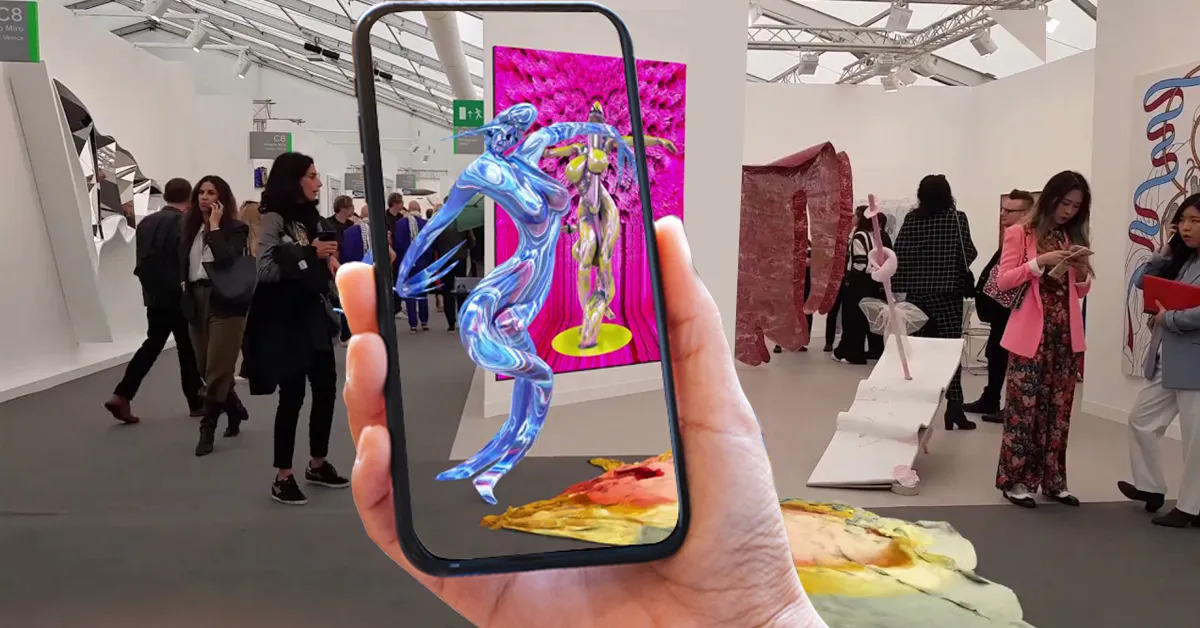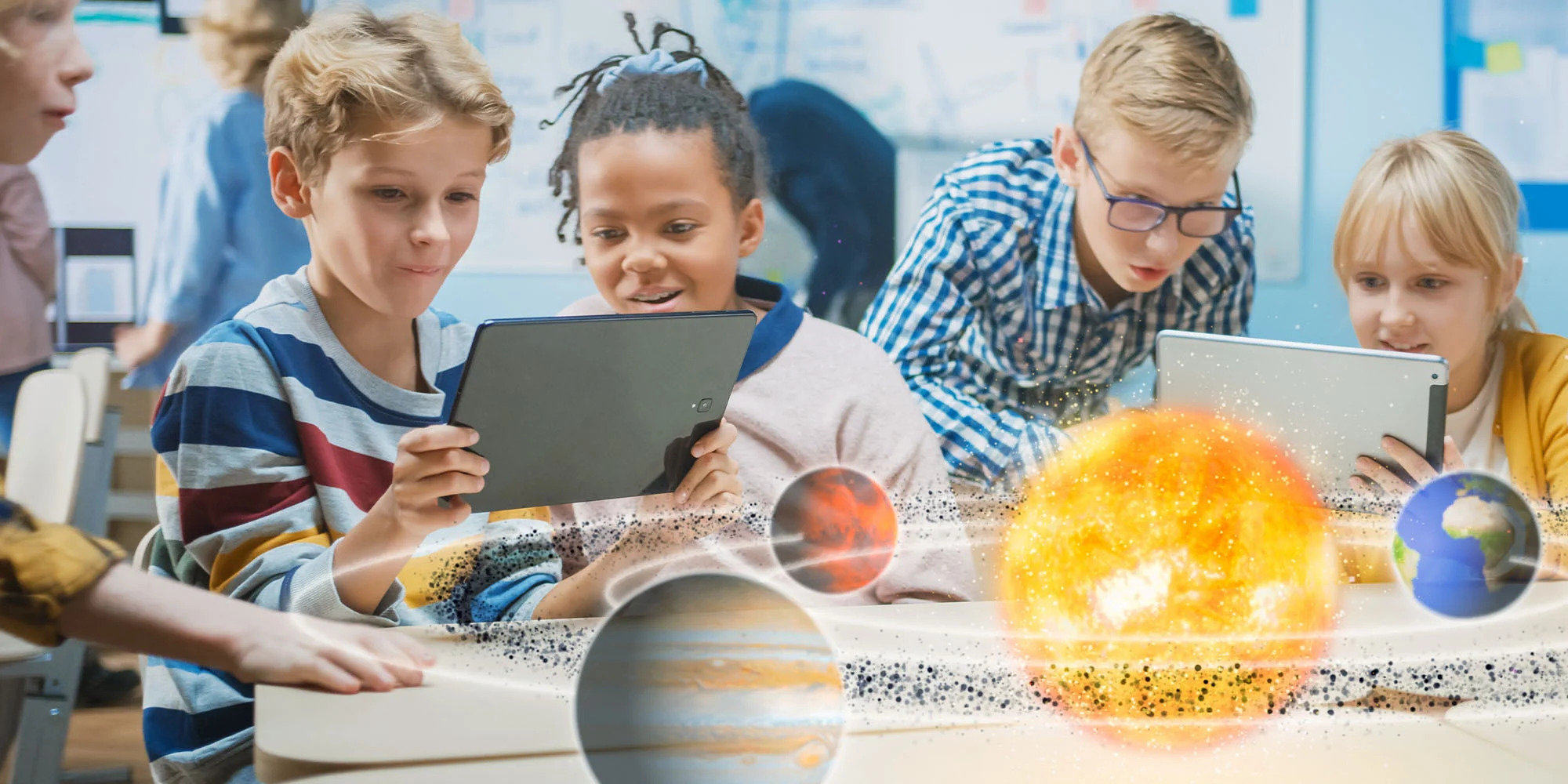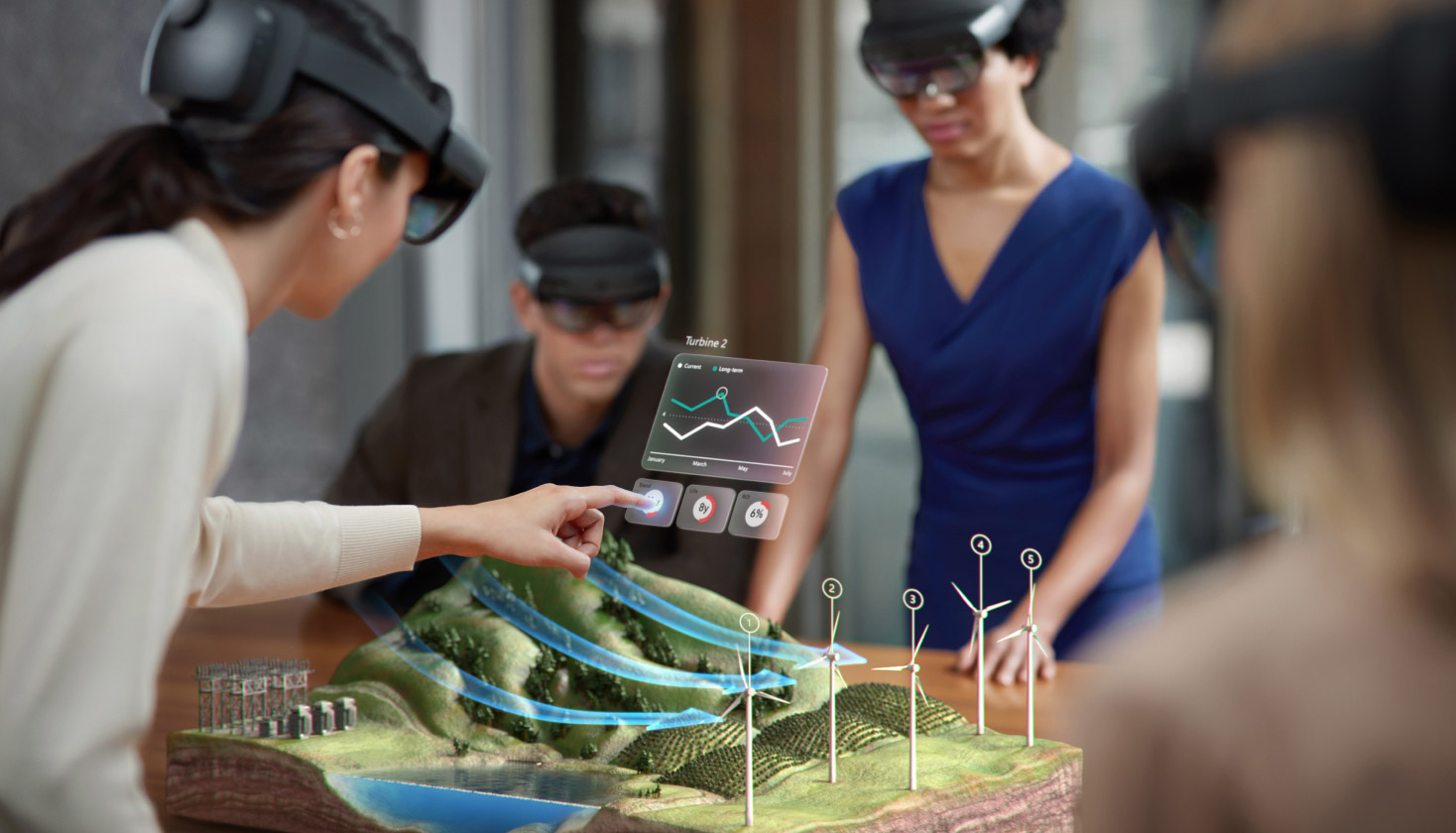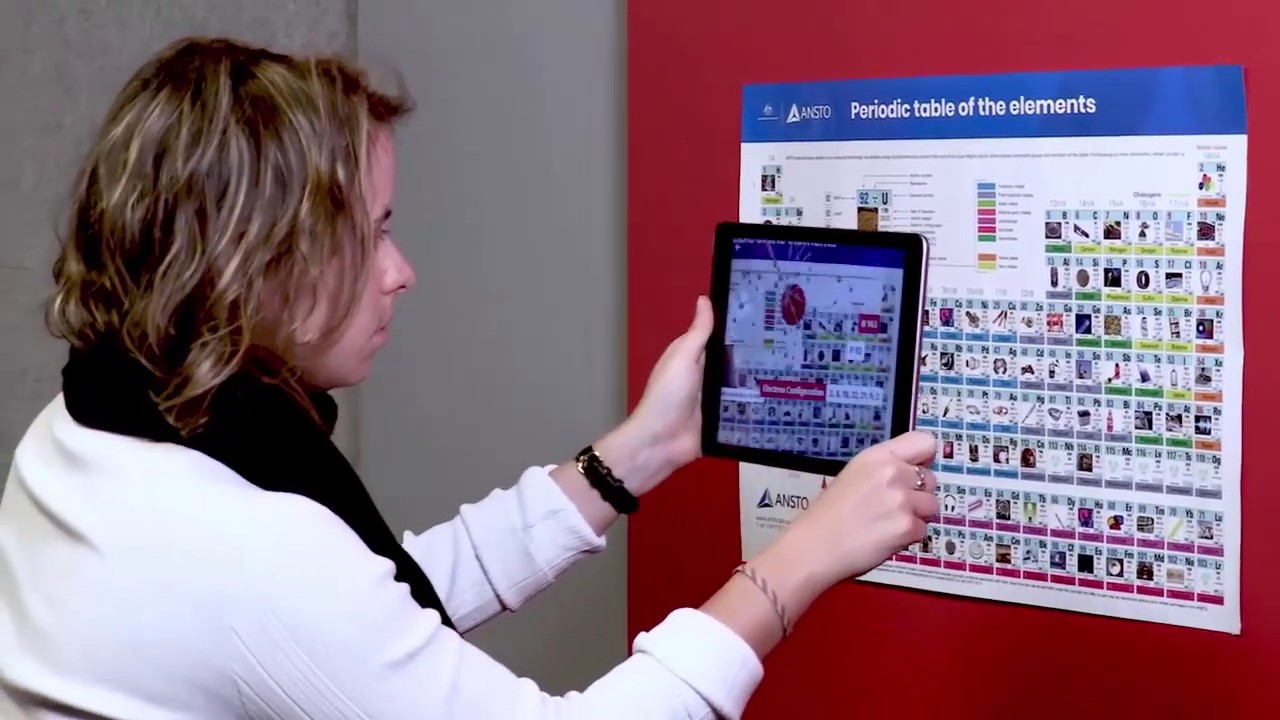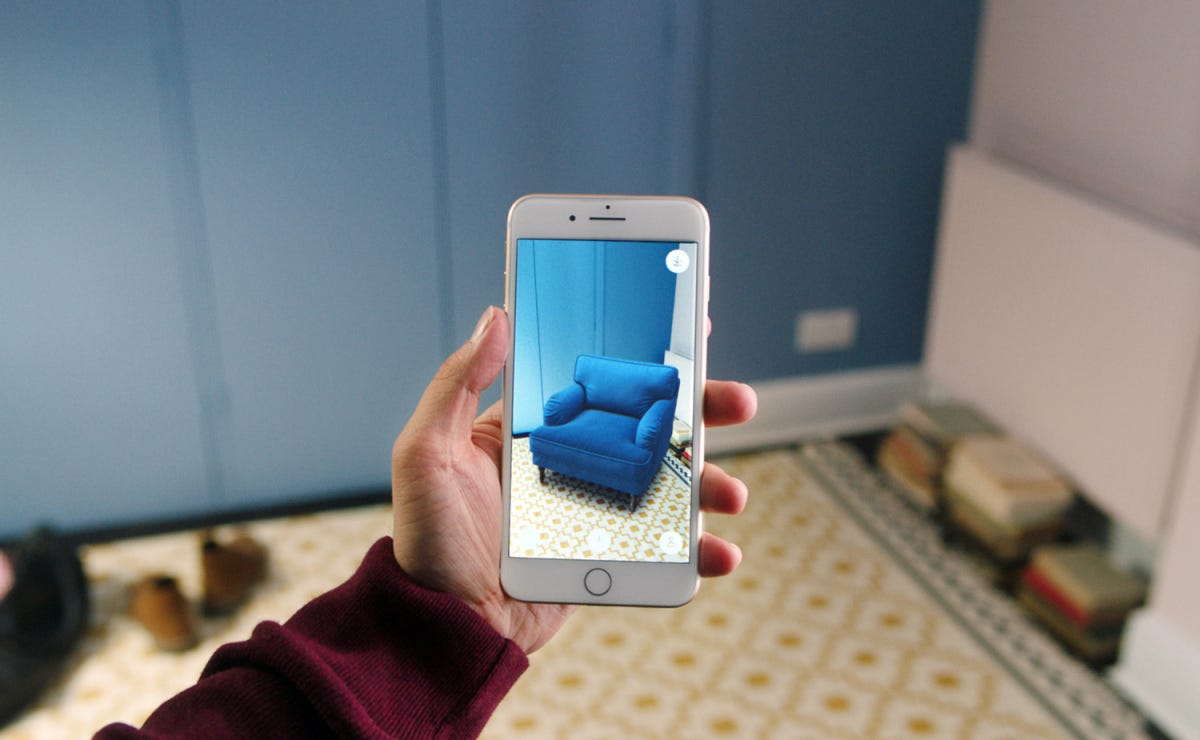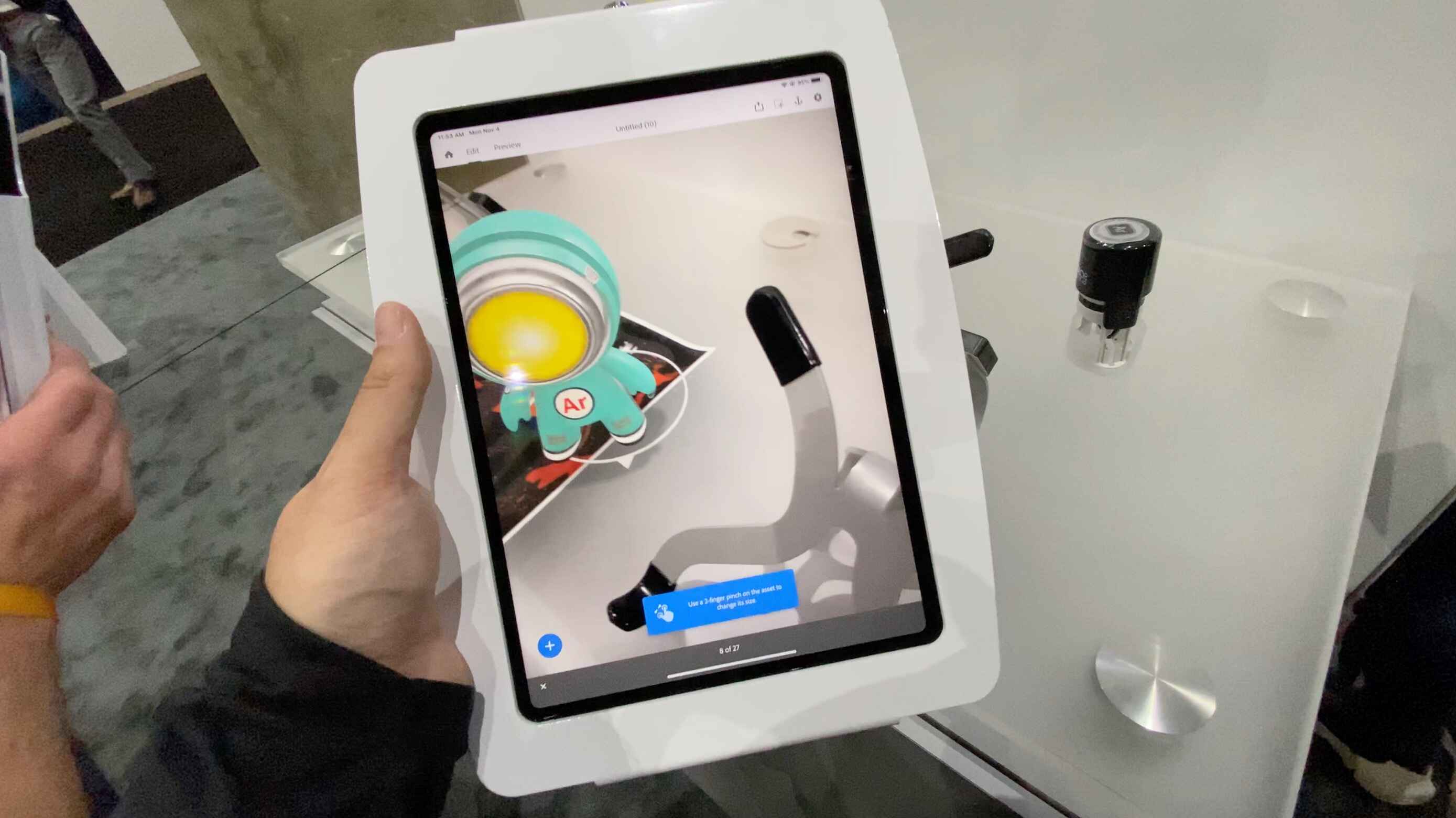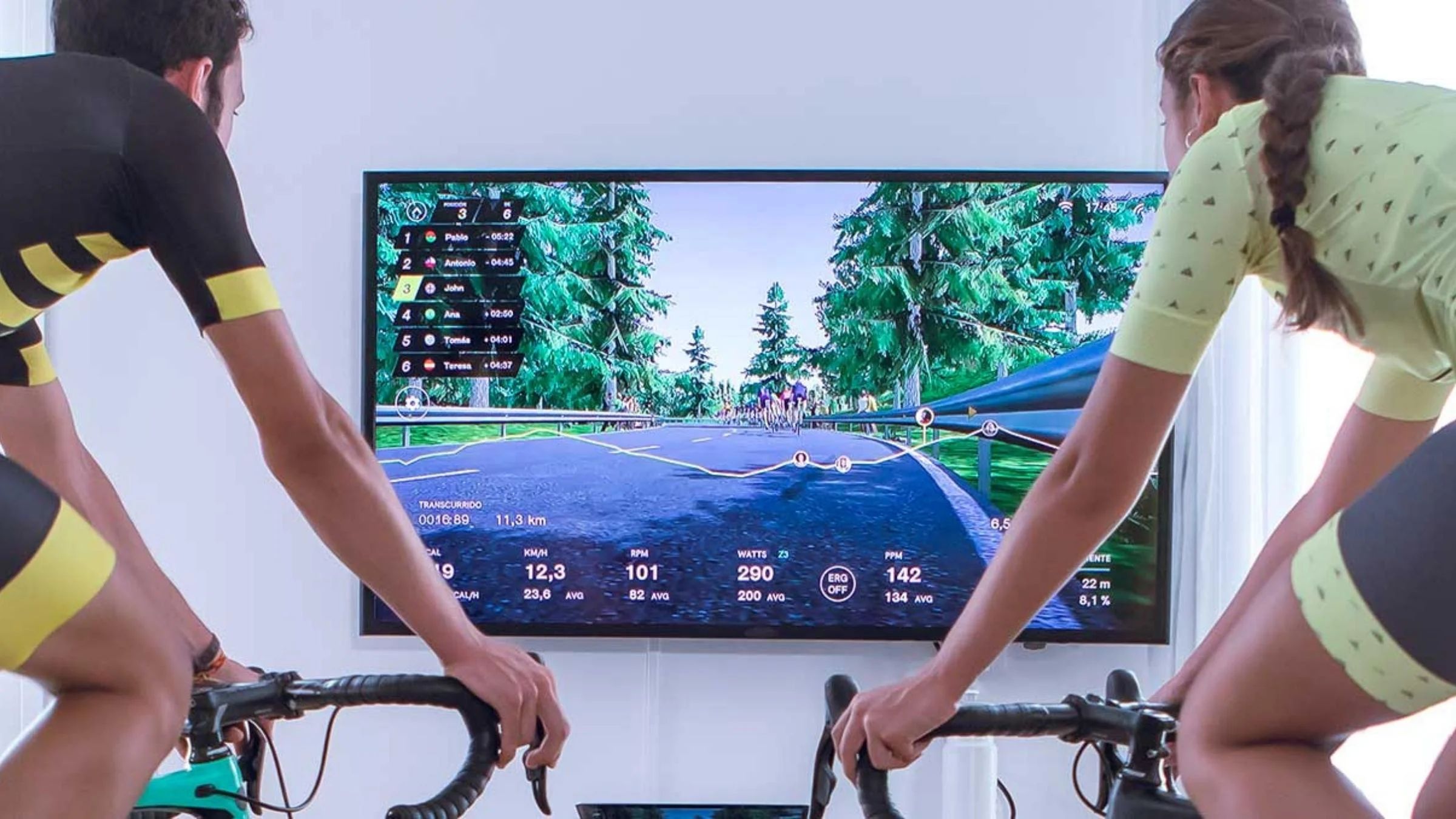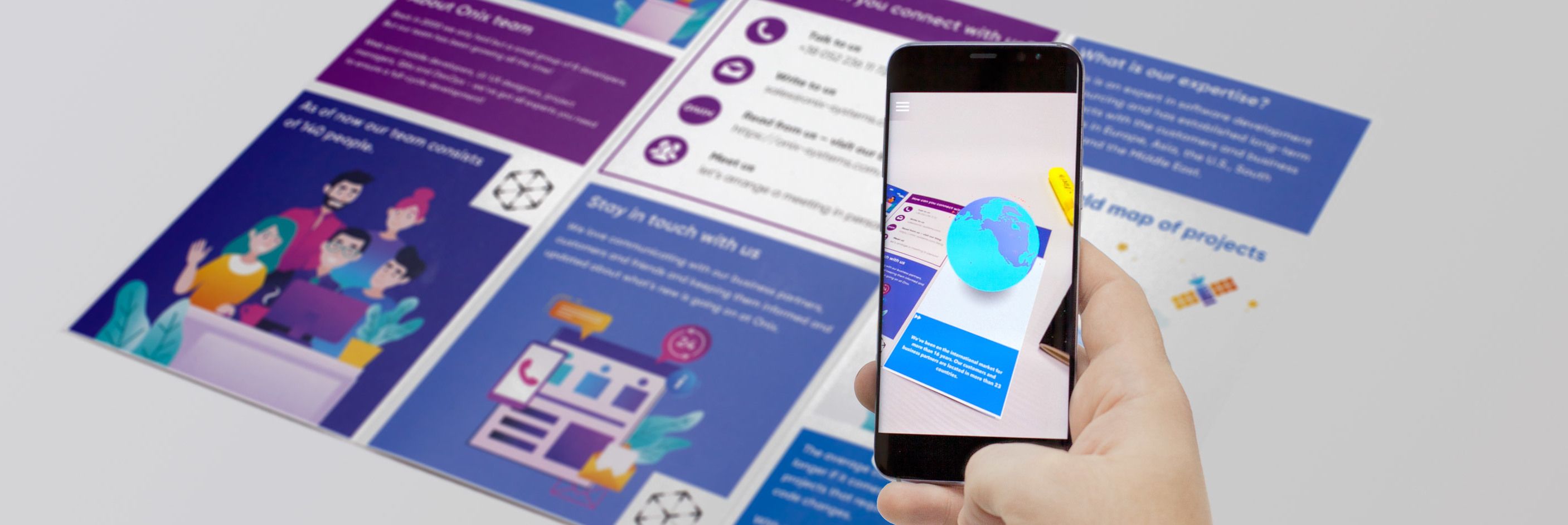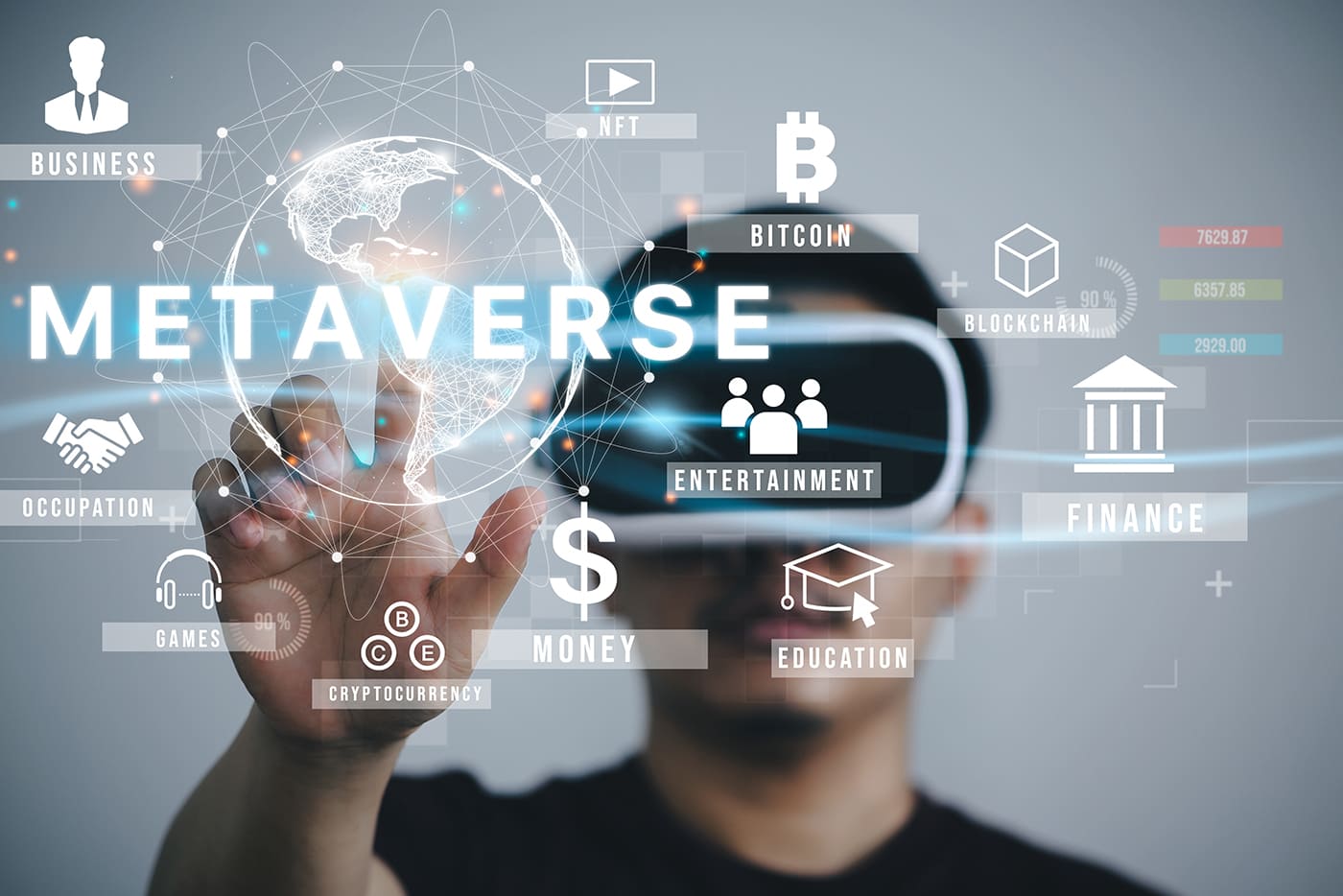Introduction
Welcome to the fascinating world of augmented reality art! In recent years, technology has revolutionized the way we create and experience art, and augmented reality has emerged as a powerful tool for artists to push the boundaries of their creativity. This cutting-edge form of art combines the real world with virtual elements, allowing artists to add digital layers to their artwork and create immersive and interactive experiences for viewers.
Augmented reality art, often abbreviated as AR art, has gained popularity among artists globally, as it offers endless possibilities for innovation and engagement. Through the use of specialized software and tools, artists can seamlessly blend digital content, such as animations, 3D models, and sound effects, with the physical world, blurring the line between reality and imagination.
Whether you’re a traditional artist looking to explore new avenues or a tech-savvy enthusiast interested in creating interactive art, this guide will walk you through the fascinating process of crafting your first augmented reality masterpiece. We’ll cover the essential tools and software needed, provide a step-by-step guide, offer tips and techniques for enhancing your artwork, and even delve into strategies for promoting and sharing your creations.
By the end of this article, you’ll have the knowledge and inspiration to embark on your own augmented reality art journey. So, let’s dive in and discover the incredible realm where art meets technology!
What is Augmented Reality Art
Augmented reality art is a form of artistic expression that combines virtual elements with the real-world environment, enhancing and augmenting the viewer’s perception and experience. Unlike traditional art forms, which are confined to static mediums, augmented reality art leverages cutting-edge technology to bring artwork to life, merging the realms of physical and digital.
In augmented reality art, artists create digital assets, such as animations, 3D models, and interactive elements, which are then superimposed onto the viewer’s real-world surroundings. This can be done through the use of specialized apps or wearable devices that utilize cameras to capture the physical environment and overlay the digital content in real time.
The beauty of augmented reality art lies in its ability to transform ordinary spaces into extraordinary, immersive experiences. With the use of augmented reality, artists can modify and manipulate the perception of space, add virtual objects or characters, and even incorporate interactive elements that respond to the viewer’s movements and gestures.
One of the key features of augmented reality art is its interactivity. Unlike traditional art forms, where viewers are passive observers, augmented reality art invites active participation. Viewers can engage with the artwork by interacting with the virtual elements, triggering animations, exploring hidden layers, and even altering the appearance of the artwork through their input.
Augmented reality art opens up a world of possibilities for artists to experiment, explore, and challenge conventional artistic norms. It allows for the creation of dynamic, ever-evolving art forms that can adapt and respond to the viewer’s context and environment. The fusion of the physical and the digital realms creates a unique and captivating experience that bridges the gap between imagination and reality.
From interactive sculptures in public spaces to immersive art installations in galleries, augmented reality art has the power to transform the way we perceive and engage with art. It breaks the constraints of traditional mediums, transcending physical boundaries and opening new doors for artistic expression.
Now that we have an understanding of what augmented reality art is, let’s explore the tools and software that artists use to bring their digital creations to life in the real world.
Tools and Software for Creating Augmented Reality Art
To create stunning augmented reality artwork, artists rely on a combination of specialized tools and software that help bring their imaginative visions to life. These tools facilitate the process of integrating virtual elements into the physical world, allowing artists to unleash their creativity and craft immersive experiences for viewers. Here are some of the essential tools and software used in the creation of augmented reality art:
- AR Development Kits: AR development kits, such as ARCore for Android and ARKit for iOS, provide a foundation for creating augmented reality experiences. These kits offer robust features and frameworks that enable artists to detect surfaces, track motion, and integrate virtual content seamlessly into real-world environments.
- 3D Modeling Software: Artists often utilize 3D modeling software, like Blender or Autodesk Maya, to create virtual models and objects that will be incorporated into their augmented reality artwork. These tools allow for the creation of detailed and realistic 3D assets, which can be animated and interacted with in the AR experience.
- Animation Software: Artists may use animation software, such as Adobe After Effects or Unity, to add movement and dynamic visual effects to their augmented reality artwork. These tools enable the creation of captivating animations that can enhance the overall immersive experience for viewers.
- Markerless Tracking Tools: Markerless tracking tools, like Vuforia or ARToolkit, allow artists to track and align virtual content with the physical world without the need for predefined markers. This technology enables a more seamless integration of digital elements into the environment, providing a more natural and immersive augmented reality experience.
- AR Content Creation Platforms: There are several content creation platforms available, such as Reality Composer or ZapWorks, that offer intuitive drag-and-drop interfaces for artists to design and build interactive augmented reality experiences. These platforms often provide pre-built templates and libraries of assets, making it easier for artists to create AR content without extensive coding knowledge.
- Camera and Mobile Devices: The primary way viewers experience augmented reality art is through their mobile devices equipped with cameras. Artists must consider the capabilities and limitations of various devices and optimize their artwork accordingly. Taking into account factors such as camera quality, processing power, and screen resolution can greatly enhance the viewer’s AR experience.
- Collaborative Tools: As augmented reality art often involves collaboration between artists, developers, and designers, collaborative tools such as Slack, Trello, or Google Drive can facilitate seamless communication and project management throughout the creative process.
These tools and software, combined with the artist’s imagination and technical skills, form the foundation of creating captivating augmented reality artwork. In the next section, we will provide a step-by-step guide to help you create your first augmented reality masterpiece, utilizing these tools and unleashing your creativity.
Step-by-Step Guide to Creating Your First Augmented Reality Artwork
Creating your first augmented reality artwork may seem complex, but with the right guidance, you can embark on this exciting journey with confidence. Follow this step-by-step guide to bring your imagination to life and create a captivating augmented reality masterpiece:
- Define Your Concept: Start by brainstorming and defining your concept for the augmented reality artwork. Decide on the narrative, theme, or message you want to convey through your creation. Consider how you want viewers to interact with the artwork and what emotions you want to evoke.
- Create the Visual Elements: Utilize 3D modeling software or image editing tools to create the visual assets for your augmented reality artwork. Design and refine your virtual objects, characters, or animations that will be incorporated into the real-world environment.
- Choose an AR Development Kit: Select the appropriate AR development kit that aligns with your desired platform (iOS or Android). Familiarize yourself with its features and capabilities to leverage them effectively in your art creation process.
- Build the Augmented Reality Experience: Utilize the chosen AR development kit to build and craft your augmented reality experience. Use markers or markerless tracking tools to anchor your virtual content to the real world. Implement interactive elements or animations to enhance user engagement.
- Test and Refine: Test your augmented reality artwork on different devices to ensure optimal performance and user experience. Make adjustments and refinements as needed, addressing any technical or design issues that arise during the testing phase.
- Consider the User Journey: Think about how users will interact with your augmented reality artwork. Consider the placement of markers or the positioning of virtual elements in the physical space to guide viewers’ attention and create a seamless and immersive experience.
- Promote and Share: Once you are satisfied with your augmented reality artwork, it’s time to share it with the world. Consider showcasing your artwork at local galleries, exhibitions, or online platforms dedicated to augmented reality art. Use social media channels to promote and engage with your audience.
- Continuously Learn and Evolve: The world of augmented reality is constantly evolving, with new technologies and techniques emerging. Stay updated with the latest trends, explore new tools, and continue learning to push the boundaries of your augmented reality art.
Remember, creating augmented reality artwork is a journey of exploration and experimentation. Embrace the process, learn from each experience, and let your creativity shine through as you craft breathtaking augmented reality experiences.
Now that you have a step-by-step guide, let’s dive into some valuable tips and techniques to enhance your augmented reality art.
Tips and Techniques for Enhancing Your Augmented Reality Art
Creating an exceptional augmented reality artwork requires more than just technical proficiency. To truly captivate your audience and deliver a memorable experience, consider incorporating the following tips and techniques into your augmented reality art:
- Storytelling: Augmented reality art is not just about visual elements; it is an opportunity to tell a story. Develop a narrative that connects viewers emotionally with your artwork. Craft a captivating storyline or use symbolism to evoke specific emotions or provoke thought.
- User Interaction: Encourage viewers to actively engage with your augmented reality art. Implement interactive elements that respond to user input, such as gesture recognition or touch-based interactions. This creates a deeper level of engagement and immerses viewers in your artwork.
- Seamless Integration: Strive for a seamless integration of virtual elements into the real world. Pay attention to lighting, shadows, and perspective to ensure that the virtual and physical objects harmoniously coexist. This attention to detail enhances the realism and believability of the augmented reality experience.
- Experiment with Scale: Play with the scale of virtual objects in relation to the physical environment. Scaling virtual objects can create a sense of wonder and amazement, whether it’s by making an object exceptionally large or small. This manipulation of scale can evoke different emotions and perspectives in viewers.
- Use Audio Effects: Incorporate sound effects or background music into your augmented reality artwork. Audio adds another layer of immersion and can heighten the emotional impact of your art. Consider using spatial audio to make virtual objects sound as if they are truly present in the environment.
- Explore Unity: Unity is a powerful game development platform that is widely used for creating augmented reality experiences. Dive deeper into Unity’s capabilities to enhance your augmented reality art. Experiment with Unity’s scripting language, shaders, and particle systems to add dynamic and visually stunning effects.
- Consider Accessibility: Keep accessibility in mind when designing your augmented reality artwork. Ensure that your artwork can be experienced by individuals with disabilities. Consider incorporating features such as closed captioning, audio descriptions, or alternative interaction methods to make your art inclusive and accessible to all.
- Collaborate: Collaborate with other artists, developers, or designers to expand your creative vision. Work together to combine different skill sets and perspectives, resulting in more innovative augmented reality art. Collaboration can help you push the boundaries of what is possible and inspire new ideas.
By incorporating these tips and techniques into your augmented reality art, you can create remarkable experiences that leave a lasting impression on viewers. Remember to continually explore and push the boundaries of your creativity to evolve as an augmented reality artist.
With these valuable tips in mind, let’s now explore strategies for promoting and sharing your augmented reality artwork with a wider audience.
Promoting and Sharing Your Augmented Reality Artwork
Creating a captivating augmented reality artwork is just the first step. To truly reach and engage your audience, it’s essential to promote and share your artwork effectively. Here are some strategies to help you promote and share your augmented reality artwork:
- Social Media: Utilize social media platforms to showcase and promote your augmented reality artwork. Create dedicated accounts for your art and engage with your audience. Share behind-the-scenes content, teasers, and updates on your artistic process to generate interest and build anticipation before revealing your complete artwork.
- Collaborate with Influencers: Partner with influencers or relevant individuals in the augmented reality or art industry to amplify the reach of your artwork. Seek collaborations with influencers who align with your artistic style and target audience. Their endorsement and promotion can greatly expand the visibility of your augmented reality artwork.
- Participate in Art Events and Exhibitions: Explore opportunities to showcase your augmented reality artwork at local art events, galleries, or exhibitions. These platforms provide exposure to a diverse range of art enthusiasts and potential collectors. Be proactive in researching and applying for participation in relevant art events.
- Create Engaging Documentation: Document your augmented reality artwork creation process and share it through blog posts, videos, or tutorials. This documentation gives insights into your artistic journey and can attract attention from art enthusiasts, fellow artists, and media outlets. Share your challenges, triumphs, and lessons learned to inspire others and establish yourself as an authority in augmented reality art.
- Collaborate with Brands or Organizations: Seek partnerships with brands, organizations, or cultural institutions that align with your artistic vision. Collaborative projects can expose your augmented reality artwork to new audiences and provide opportunities for cross-promotion. Pitch your ideas to potential collaborators and showcase the unique value your augmented reality art brings to their brand or cause.
- Engage with the Augmented Reality Community: Join online communities, forums, or social media groups dedicated to augmented reality artwork. Engage in conversations, share your work, provide feedback to others, and build relationships with fellow artists and enthusiasts. Collaboration and support within the augmented reality community can lead to valuable connections and opportunities.
- Create a Dedicated Website or Portfolio: Establish an online presence by creating a dedicated website or portfolio showcasing your augmented reality artwork. Ensure that your website is visually appealing, user-friendly, and optimized for search engines. Include high-quality images, videos, and descriptions of your artwork, along with a contact section for potential inquiries and collaborations.
- Attend Industry Events: Attend industry conferences, workshops, or seminars focused on augmented reality or art. Networking at these events can help you connect with industry professionals, experts, and potential collaborators. Stay updated on the latest trends and technological advancements in augmented reality art and share your knowledge and experiences.
Remember to be consistent in your promotion efforts and to engage with your audience regularly. Building an audience and establishing your presence may take time, so be patient, persistent, and proactive in promoting and sharing your augmented reality artwork.
With these strategies in mind, let’s now explore some inspiring examples of augmented reality art that can fuel your creativity and spark new ideas.
Examples of Inspiring Augmented Reality Art
Augmented reality art has opened up a world of creative possibilities, and artists around the globe have embraced this innovative medium to create breathtaking and thought-provoking artworks. Here are some inspiring examples of augmented reality art that showcase the incredible potential of this medium:
- “Rain Room” by Random International: This immersive installation invites visitors to walk through a downpour of falling rain while remaining perfectly dry. Using motion sensors and augmented reality, the rain stops wherever visitors walk, creating a mesmerizing and interactive experience.
- “Unmoored” by Mel Chin: This large-scale augmented reality artwork transports viewers to a dystopian future where rising sea levels have engulfed iconic landmarks. Through a smartphone app, users can see the submerged buildings and engage with thought-provoking narratives about climate change.
- “AR-T” by Tyra Hatzigeorgiou: Tyra Hatzigeorgiou, an artist specializing in augmented reality, brings famous paintings to life through her AR-T app. Users can point their smartphone cameras at paintings, and animated characters and objects seamlessly emerge, interacting with the original artwork in captivating ways.
- “The Dance of Youth” by Abhinav Bhatt: Abhinav Bhatt uses augmented reality to merge digital art with traditional Indian dance forms. Through an app, viewers can witness a mesmerizing blend of physical movement and digital visuals, creating a unique and harmonious performance.
- “AeroSee” by Natalie Jeremijenko: AeroSee is an augmented reality project that combines art and citizen science to explore the world of birds. Users can view virtual birds flying in their real-world environment through a smartphone app, promoting awareness and understanding of avian ecology.
- “Sky Orchestra” by Luke Jerram: Sky Orchestra is an augmented reality project that combines hot air balloons and music. In this immersive art experience, hot air balloons are equipped with speakers, playing ethereal music as they fly over the city, creating a surreal and enchanting auditory and visual performance.
- “The Enemy” by Karim Ben Khelifa: The Enemy is an immersive virtual reality experience that uses augmented reality to bring war photographers and their subjects to life. Through a VR headset and an accompanying app, viewers can engage with the narratives and experiences of those affected by war.
- “Virtual Depictions: San Francisco” by Refik Anadol: This stunning augmented reality artwork transforms the cityscape of San Francisco into a dynamic canvas for digital visuals. Using architectural mapping and projection techniques, the artwork showcases a symbiotic relationship between the physical structures and abstract digital imagery.
These examples of augmented reality art demonstrate the wide range of possibilities within this medium, from immersive installations and interactive performances to meaningful narratives and environmental awareness. They inspire us to push the boundaries of creativity and explore the potential of augmented reality art.
Now that we’ve explored these inspiring examples, it’s time for you to unleash your creativity and embark on your own augmented reality art journey!
Conclusion
Augmented reality art has revolutionized the way we create, experience, and interact with art. Through the seamless integration of virtual elements into the physical world, augmented reality artists are pushing the boundaries of creativity and engaging viewers in immersive and captivating experiences.
In this guide, we explored the fundamentals of augmented reality art, including the definition and potential of this medium. We discussed the essential tools and software for creating augmented reality artwork, providing artists with the resources they need to bring their visions to life.
With a step-by-step guide, we walked through the process of developing your first augmented reality artwork, emphasizing the importance of conceptualization, visual creation, and user interaction. We also offered tips and techniques to enhance the impact and engagement of your augmented reality art, such as storytelling, seamless integration, and collaboration.
Furthermore, we discussed strategies for promoting and sharing your augmented reality artwork, emphasizing the use of social media, collaborations, art events, and engaging with the augmented reality community. These avenues create opportunities to reach a wider audience and build a reputation in the augmented reality art scene.
Finally, we explored inspiring examples of augmented reality art that demonstrate the infinite potential of this medium. Each artwork showcased the power of augmented reality to transform spaces, challenge perceptions, and evoke emotions.
Now armed with this knowledge, it’s time to unleash your creativity and dive into the world of augmented reality art. Whether you’re an artist seeking new horizons or a tech enthusiast fascinated by the intersection of art and technology, augmented reality art offers a realm of possibilities for you to explore and express your unique artistic voice.
So, equip yourself with the necessary tools, nurture your imagination, and let your creativity flourish in the incredible realm where the physical and digital merge to create unforgettable augmented reality experiences.







